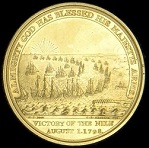I like analyzing and quantifying things, and from day one I've been trying to figure out how to evaluate ship maneuverability in the game. I'm wondering what people have observed or think about this.
Some topics I've been pondering:
1) How important is maneuverability in the game? It's comparatively easy to quantify firepower and toughness. But if, say, a frigate has twice as much damage capacity and twice as much gunnery as a sloop, to what extent does it's better maneuverability mitigate this?
2) How important are the components of maneuverability (i.e. sailing angles, veer, speed and the card deck). Now we have several examples where these are not all strictly aligned with each other
3) As a practical measure, how do you quantify these things.
3a) Simply determining the sailing angles seems non-trivial. I'd like to simply measure the length of the bands along the sides, but you really want angles. But these can vary quite a bit based whether you measure from the post, the top of the mast or the bottom of the mast. Every time I measure I seem to get different results...
3b) I feel there might still be a bit more to learn from the cards. It would be fun to scan them and overlay. It may be that if you know the "base speed" (say, the length of the standard sail straight-5 arrow) then you could predict all the other arrows, but I'm not sure if that's the case. For example the sharp turns at full sail for the sloops seem to loop out far further than for smaller ships.
How do you think about maneuverability?






 Reply With Quote
Reply With Quote



























Bookmarks